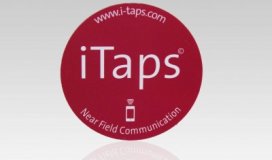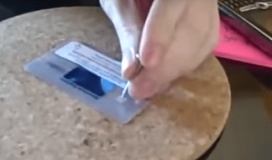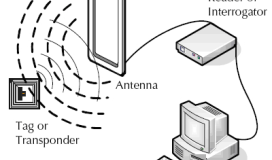Automatic identification, or auto ID for petite, is the comprehensive terms given to a host of technologies that are used to support machines recognize objects. Auto identification is frequently attached with automatic data detention. I.e., companies need to identify items, capture information about them and someway get the data into a computer without employees typing it manually. The goal is to increase effectiveness, decrease data entry errors, and free up staff to attain more value-added utilities.
Radio frequency identification, or RFID, is a common term for technologies that use radio waves to mechanically recognize people or objects. There are numerous approaches to identification, but the most widespread is to amass a serial number that identifies a person or object, and perhaps other information, on a microchip that is devoted to an antenna which are together called RFID transponder or an RFID tag. The antenna assists the chip to communicate the classification information to a reader. The reader transforms the radio effect imitated again from the RFID tag into digital information that can then be delivered on to computers. For this, you need to know how to make NFC tag.
An RFID system consists of a tag, which is fabricated of a microchip with an antenna, and an interrogator or reader with an antenna. The reader sends out electromagnetic waves and then the tag antenna is tuned to obtain these waves. An adamant RFID tag attracts power from field formed by the reader and uses it to control the microchip’s circuits. The chip then amends the waves that the tag sends back to the reader and the reader transforms the new waves into digital data.
NFC (Near Field Communication) is getting more attention by the media after becoming a technology for mobile expenses and creative advertising. Most of the new mobile devices sustain NFC, but most people don’t really know about or use it. NFC tags can be tiny stickers, which include a small unpowered NFC chip. Relying on how the tag is planned, it can transform a variety of settings, launch apps and perform definite procedures just by holding your phone close to it. To do this, the tag takes a diminutive amount of power from the Smartphone and transfers its stored information on top of it.
What if you want to know how to make NFC tag? You can build your NFC tag using a miniature 84 micro controller, 4 resistors, 3 capacitors, a diode, and an antenna. It puts into practice ISO 14443-3, a standard for recognition cards, and can speak with the NFC chip sets found in most new smartphones.
The antenna and an uneven capacitor that forms an LC circuit tuned at 13.56 MHz, which is the transporter frequency for the procedure. The diode acts as an envelope detector, leasing the microcontroller pick up the signal.



